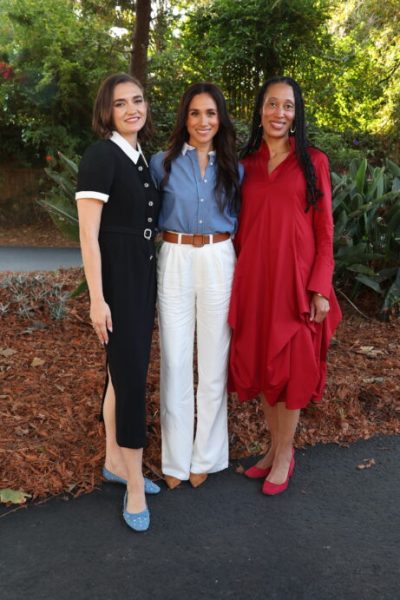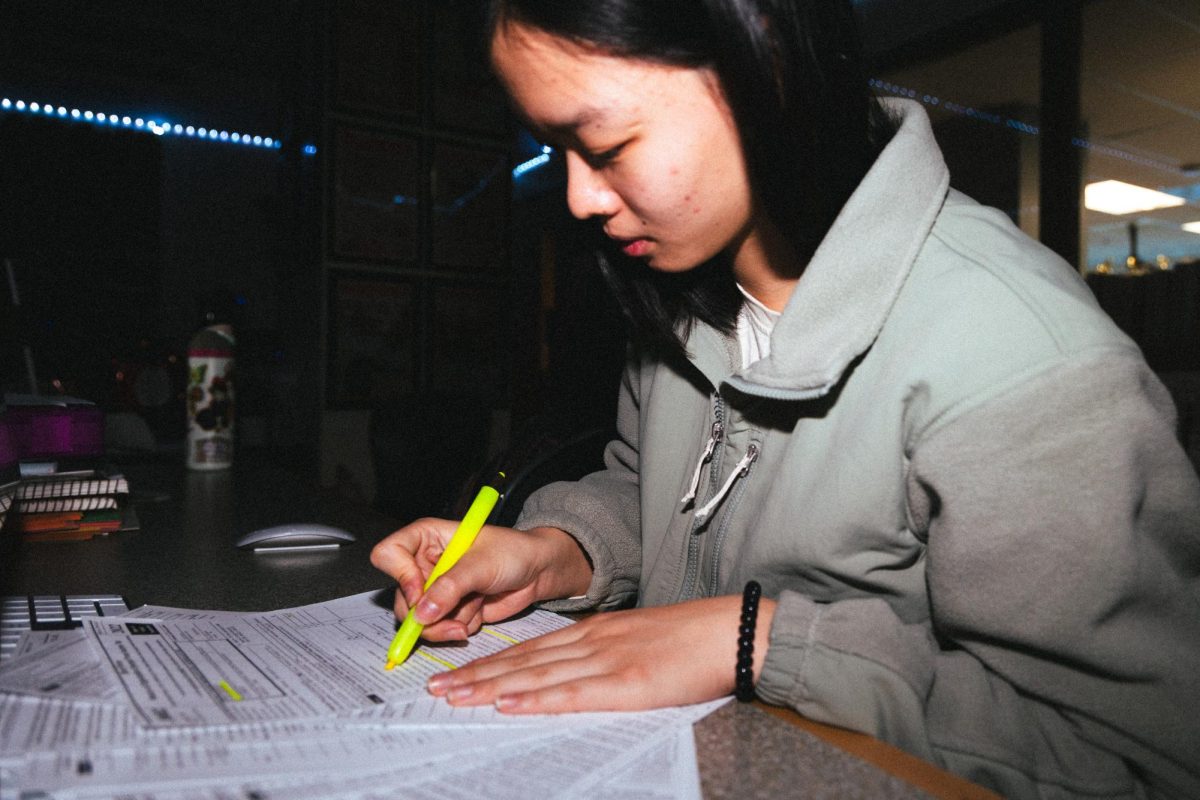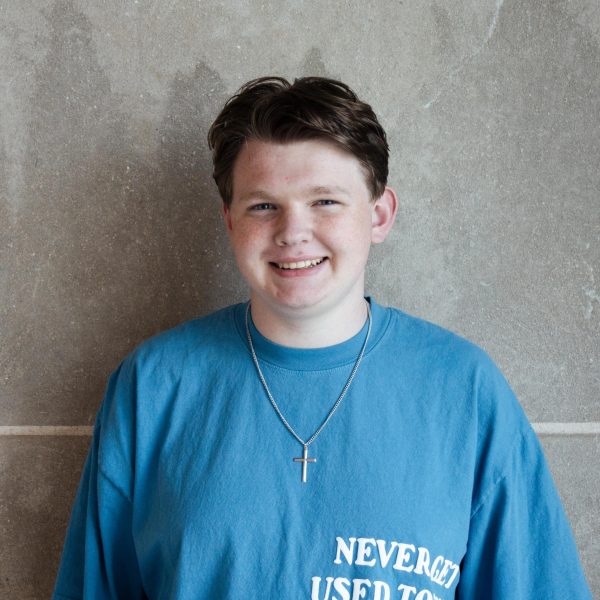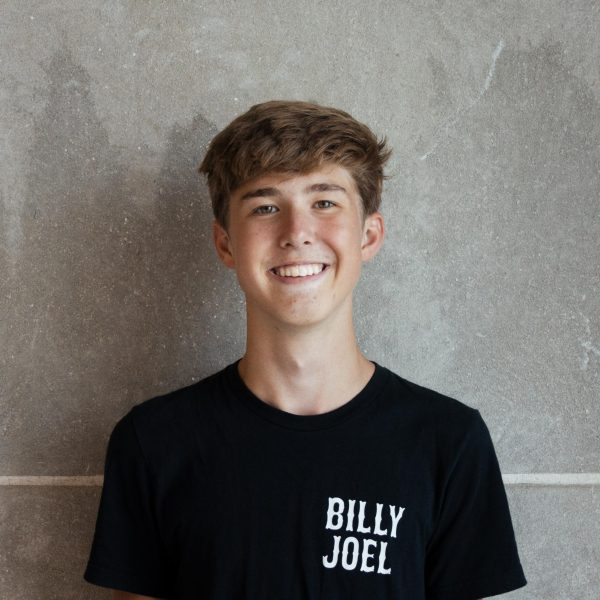Students from Naperville Central founded Beyond Charity to advocate for student mental health, eventually passing the Beyond Charity Law signed by Gov. J.B. Pritzker in August 2021, which requires student IDs to include contact information for suicide prevention hotlines. But only three years later, the nonprofit’s website redirects to a Singaporean gambling page and their Instagram account has remained inactive since July 2023.
Then-junior Yashvi Sanam took over as the president of Beyond Charity in October 2022, shortly after founder Aparna Ramakrishnan began college. When Sanam stepped down ahead of her senior year, the nonprofit put out a final call for help: “We are hiring! Open positions: Vice President, Outreach Director, presenters [and] President.” Nobody responded.
“Letting it die isn’t what we wanted,” Sanam said. “It just kind of happened that way.”
Unfortunately, Beyond Charity’s story isn’t unique. According to Palorah Capital, a free consulting firm for youth-run organizations, 80% of school-created nonprofits fail within a year of their initial launches.
“The longevity of youth-led organizations [is] so limited; most of the time it just stays within the four years of high school, and a lot of students start later [in] their junior or senior year,” Palorah Capital CEO Nithin Palani said. “Their impact doesn’t exist at any point after that. We think that it’s a huge problem when they do, in fact, stop after graduating.”
One Naperville nonprofit, Youth Voices, was founded in May 2020 by William Ma, who quit after graduating from Central in 2021, and Zachary Wu, who reduced his involvement after graduating from Naperville North in 2023 and has since left the organization. While it continues to offer paid debate coaching, its free weekly meetings were discontinued in December 2023.
“All of us could feel the passion for the organization fading as time went on,” said junior Hannah Leong, who previously served on Youth Voices’ leadership development team. “More and more focus was put on the paid lessons and less focus was put on the nonprofit that it was intended to be.”
Nonprofits at Naperville Central
On the leadership development team for Youth Voices, Leong worked alongside North junior Emilie Fann to plan the nonprofit’s free weekly coaching sessions. After they were discontinued last year, the two co-founded the Asian Impact Movement to foster unity within the Asian community through volunteerism and civic engagement.
It’s one of nearly a dozen nonprofit organizations founded by current Central students. They range from sustainable food initiatives and coding competitions to youth business fairs and more.
Senior Andrew Lazovski has founded three nonprofit initiatives while at Central, all falling under Community Anchor NFP. He traveled to Ukraine in October to distribute 17 tons of humanitarian aid in the nation’s Kherson region after fundraising $35,000 through the nonprofit.
“Once the Kakhovka Dam [in Kherson, Ukraine] did explode, people were telling me on the ground about the lack of help — there was help coming in, but a very small amount of it not sufficient for the amount of people there — they had no food, no water, no electricity, it was just impossible for them to continue surviving in such an environment,” Lazovski said. “I knew that there had to be something that could be done.”
Importance of longevity
The lack of longevity among student-led nonprofits can be detrimental to organizations that strive to make a lasting impact. When Youth Voices discontinued their free debate coaching — which supported over 250 students and were advertised in a Talk203 newsletter — many regular attendees were forced to pay upwards of $410 for similar offerings.
“I feel like for other people that don’t come to the paid lessons, it might be a struggle for them,” said freshman Lucas Yan, a registered member of Youth Voices. “Having it just close randomly hurt many people because they wanted to keep going to debate.”
Leong hopes to take the lessons she learned while on Youth Voices’ leadership development team to improve the longevity of Asian Impact Movement by recruiting underclassmen to board positions.
“I don’t want it to crumble when we are gone,” Leong said. “Once Zach [Wu] left Youth Voices, it was over. I don’t want that to happen to Asian Impact Movement.”
The organization is just one of more than 4,000 student-led nonprofits across the U.S., Palani estimates. He believes many of those organizations are founded to replace other nonprofits that have shut down. Shortly after Youth Voices stopped offering free coaching, new nationally-based organizations such as The Lab Debate and EmpowerDebate were created with similar mission statements.
“Please pass down your organization to students that are just as passionate as you are, because chances are, if you’re working on a community initiative, there are students in your same area that want to follow through with the same initiative,” Palani said. “If you already built that foundation for them, allow that organization to pass down and continue to help the same amount of people that you wanted to help to begin with.”
However, passing down a nonprofit organization isn’t always a simple process, according to Sanam. She made repeated attempts to let another student take over as president of Beyond Charity, but none were successful.
“The reason why a lot of times it doesn’t work is because you have a core senior class that are working on this, and then when they all graduate, it almost feels like you’re starting from nothing,” Sanam said. “You don’t always have freshmen, sophomores or even juniors that are a part of that founding class, and so they’re not able to pass that knowledge onto the next group of people.”
Others suggest that longevity is best achieved by continuing to run the nonprofit while in (and even after) college. Lazovski plans on continuing all three of his nonprofit initiatives after graduating from Central. By involving adult volunteers and building credibility with donors, he hopes to bypass many difficulties that other nonprofits face when getting off the ground.
“It takes years for nonprofits to develop; just having only four years to be personally involved in it and then handing it off would be very ineffective and lead to very slow progress, maybe even no progress in the long-term,” Lazovski said. “I hope in the next 10 years that I can have these organizations grow and prosper.”
To be or not to be 501(c)
The majority of nonprofits — including Youth Voices and Asian Impact Movement — receive 501(c) tax-exempt status, which allows donations to be tax deductible and increases grant eligibility. While 92% of all nonprofit organizations filed as 501(c) in 2023, only 12.9% of youth-led organizations hold the same designation, according to a Palorah Capital analysis.
“It’s very hard as a youth to be able to file for 501(c) and also make sure that you have the money to spend [to get] it,” Palani said. “There’s a huge disparity between wealthier individuals having that status as a youth compared to people who aren’t. That’s why there’s a big disparity between how youth-led organizations struggle to grow, while some can easily grow.”
Most student-led nonprofits qualify for a reduced 501(c)(3) filing fee of $275 in addition to Illinois’ incorporation fee of $50. But Palani doesn’t think it’s worth it to spend that money on a student-led nonprofit unless it focuses on “working with other organizations” or “grant acquisition.”
For larger student-led nonprofits, one-time filing fees are just the beginning. While the IRS accepts annual electronic notices without payment, tax attorneys can regularly charge upwards of $600 to prepare the document. For student-led tutoring organization The Merry Tutor, that cost proved to be too much.
“We had to let go of our 501(c)(3) status because the filing and the lawyer fees for being able to get everything filed would be too much at this moment,” said senior Bavya Chowdavarapu, co-president of The Merry Tutor’s Naperville chapter. “We are on track to fundraise to be able to have that [status] in the future. Right now, we are going off of whatever is free for us to do.”
Last April, Clover Math hosted a math competition for 150 local elementary and middle school students at Central, giving out $200 in award money. The organization isn’t legally registered as a nonprofit organization, although co-founder and senior Arthur Xu is currently “planning on it.” He hopes that additional donations and grant money could be used to supplement their prize pool.

Juniors Anushka Gulati and Riya Dondapati co-founded STEM Quest in January 2024 to provide hands-on learning opportunities in STEM fields. Despite repeated attempts at fundraising, they were unable to cover the costs of their summer camp and were forced to self-fund the initiative.
“Every place that we would apply to wouldn’t be able to give us a grant because we weren’t [a] legal [501(c) nonprofit] yet, and that was really affecting our success,” Gulati said. “We had to fund [the camp] ourselves, and as students we obviously don’t have the capability to buy all the technology and equipment that we needed. Working as a legal [501(c)] nonprofit, it’s much easier to get that funding.”
STEM Quest officially received 501(c)(3) status in October.
“If your impact is fully tailored towards working with other organizations or receiving grants to actually create impact, then go for 501(c),” Palani said. “But if your plan is working on community building or stopping a crisis that’s occurring in your community, you don’t need 501(c) [status] for that. You just need to put in hard work and effort.”
Incentivized by college admissions
Many high school students believe that founding a nonprofit in high school can help them stand out in the increasingly-competitive college admissions environment. The total number of applications to Ivy League schools has risen 62% in the past decade, according to data from Top Tier Admissions.
Zach Chen is a co-founder of college consulting firm IvyLine and a freshman at Harvard University. He believes a “majority” of student-led nonprofits are created primarily for the purpose of college admissions.
“With people founding nonprofits, the incentive is there to found it, and then once they get into college they basically just quit,” Chen said. “It’s a bad system.”
The strategy has a track record of success, according to Chen. IvyLine’s four co-founders — all of whom attend Ivy League universities — collectively founded or co-founded five nonprofit organizations while in high school. Youth Voices co-founders Ma and Wu are also students at Harvard and Vanderbilt University, respectively.
“Anytime a student has a leadership role or has a strong impact, it’s going to be good on a college application,” said Maddie Corder, Central’s college and career counselor. “It doesn’t necessarily have to be founding a nonprofit. It has an effect because extracurriculars and activities are something that colleges look at, but it’s not something that is going to be a magic golden ticket.”
And as more students submit applications to highly-selective institutions, their acceptance rates continue to drop. Since 2014, Ivy League schools have cut their acceptance rates from 8.39% to 4.75% in 2023, according to Top Tier Admissions data.
“I think a lot of students in the current day and age will make a nonprofit to help them in college admissions,” Chen said. “There’s definitely some students out there who are doing it for college — probably a majority.”
However, this incentive structure can have negative impacts for the nonprofits left behind. After getting accepted into college, many founders lose the passion to continue leading their organization.
While a student at Boston Latin School, Chen founded the Unity Network, a nonprofit providing free resources for STEM research and science fairs. However, the organization’s Instagram hasn’t posted since June and their most recent digital resource was published in January.
“It felt like a high school thing,” Chen said. “I’m not sure why, but I felt like it was just the right time to move on.”
Stories of success
Diana Chao founded Letters to Strangers in 2013, when she was a sophomore at Claremont High School in California. Now 25, she continues to lead L2S full-time as it’s Executive Director. The 501(c)(3) nonprofit currently runs on a six-figure operating budget to offer support for people struggling with mental health through anonymous letters.
“I had to figure out how to balance and prioritize my extracurricular life at school, other jobs I had to get to maintain my livelihood, plus homework and also this nonprofit that I didn’t want to give up,” Chao said. “That took a really big emotional and physical toll on me.”
L2S has already reached over 500,000 people across six continents through their anonymous letters. Their youth-for-youth mental health guidebook educates thousands of students on the basics of mental health and how various identity backgrounds can influence mental wellbeing.
Chao was recognized as a Women of Worth by L’Oréal Paris in 2020, although she says her recent publicity is only possible due to years of dedication. L2S, started as a club at Chao’s high school, has now grown into “the world’s largest youth-run nonprofit seeking to destigmatize mental illness and increase access to affordable, quality treatment.”
The story echoes that of Larissa May, who founded #HalfTheStory in 2015, when she was a student at Vanderbilt University. A decade after the nonprofit was founded with a $250 grant, it now runs on a seven-figure operating budget with support from Prince Harry and Meghan’s Archewell Foundation to empower a positive relationship between teens and technology.

#HalfTheStory now has a goal to serve 1 million students over the next five years. Its Social Media U program uses teen-led content and interactive learning to improve digital wellbeing.
“The impact we see today, including our partnerships, program growth and media recognition, would not have been possible if we’d stopped in the face of early challenges,” May wrote in a statement to the Central Times. “The persistence in those early years laid the groundwork for a nonprofit that now has a global reach and significant influence in digital wellness conversations.”
In Naperville, The Merry Tutor has provided free K-12 tutoring for over a decade. Originally founded in November 2013 by Jane Boettcher (then a freshman at North), it has since grown to four tutoring locations across two chapters and supporting over 300 students. Though Boettcher continues to serve as the organization’s Executive Director, most operations are handled by its chapter presidents in Aurora and Naperville, including Chowdavarapu.
For Chowdavarapu, the longevity of the organization is due in large part to internal progression within the nonprofit. She originally signed up to be a tutor ahead of her freshman year before being promoted to money manager as a junior and now serves as Naperville chapter co-president in her senior year.
“Because of [the pandemic], I was a lot more able to tutor on both weekdays and weekends [and] I was able to be there for basically every single session,” Chowdavarapu said. “My commitment, the time I put in, that’s why they picked me to be co-president.”
This emphasis on perseverance and growth underscores a shared philosophy among nonprofit leaders that focuses on longevity and sustainability over short-term expansion and temporary recognition.
“Growth and longevity come from staying true to your mission while being adaptable,” May wrote. “The journey won’t be easy and there will be countless challenges, but persistence and a clear vision are key. Lean into your community, seek strategic partnerships and prioritize sustainable growth over rapid expansion. Your work matters, and sticking with it through the ups and downs will allow you to create [a] long-lasting impact.”







Jeremiah Chua • Nov 17, 2024 at 7:29 pm
wow a lot of work must’ve been put into this nice job